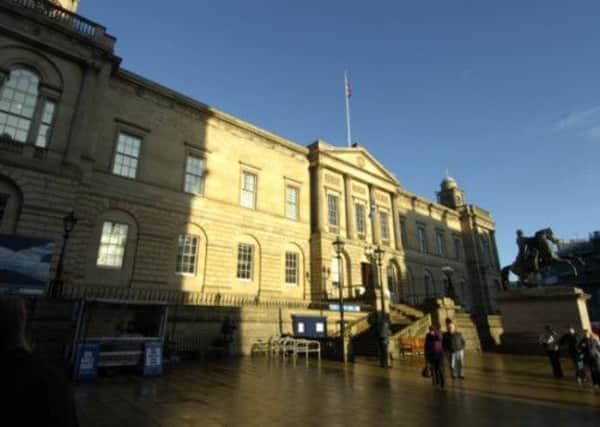Lost Edinburgh: Register House
This article contains affiliate links. We may earn a small commission on items purchased through this article, but that does not affect our editorial judgement.


Prior to the construction of Register House, Scotland’s public records were stored in a rather haphazard fashion within the unsuitable confines of Parliament House in the heart of the Old Town. Exposed regularly to both damp and vermin, the national archives were said to be in a ‘perishing condition’ and it was abundantly clear that alternative accommodation was required. The idea of finding a permanent home for the country’s public records had been around since the Treaty of Union in 1707 when Scotland was guaranteed that it would be allowed to keep hold of them. Sadly, lack of significant finance meant that many years would pass before the register office could become a reality.
Plans put in place
After decades of waiting, a government grant of £12,000, earned from the sale of forfeited Jacobite estates, was made available in 1765 to commence with the building of ‘a proper repository’. Within four years a location directly opposite the northern end of the soon-to-be-completed North Bridge was agreed upon. The site was gifted to the Register House Trustees by the city as it was thought that a grand new public building would encourage development in Edinburgh’s New Town.
Advertisement
Hide AdIn 1772 the distinguished Robert Adam was assigned the role as architect for the ambitious project. Having been appointed Architect of the King’s Works with responsibility for Scotland in 1761, Robert Adam was a master of his profession and highly revered across the nation. Adam, assisted by his younger Edinburgh-based brother, managed to maintain a tight control over the beautifully proportioned neoclassical design of Register House - despite working from his office in London. Adam’s impressive 50 ft wide central domed rotunda inspired by the Pantheon in Rome is regarded as the finest feature of the building’s interior.
Foundations laid
The foundation stone for Register House was laid on the 27th June 1774. Progress was painfully slow and ceased altogether in 1779 when the money ran out despite a cash boost of £2,000 just a year earlier. Work would not resume until 1785, prompting the well-known publisher William Creech to mockingly label the unfinished structure as ‘the most magnificent pigeon house in Europe’.
By the time the first archives were transferred to Register House in 1787, new architects had been put in place and the cost of the project had spiralled to more than £30,000. Robert Adam’s design had insisted on the use of stone and brick to ensure the protection of the building’s easily-perishable contents. To achieve fireproof status, Register House was solidly constructed using locally-quarried stone and featured brick vaults underneath flagstone flooring inside all but one of its rooms. It is this very feature which contributed to the building’s excessively high construction cost and ultimately delayed the project. Work on the elaborate building continued until the 1820s when the northern section of Register House was finally completed to a much-altered and restrained design by architect Robert Reid.
Alterations
The front wall and staircase of Register House were pushed nine feet further back in 1850 to create space for the erection of the equestrian statue of the Duke of Wellington by John Steel. The realignment also allowed for a better traffic flow on to Leith Street.
Register House was somewhat damaged in 1969 following abrasive cleaning of the Georgian stonework. The work on the exterior had been intended to merely remove a century’s worth of soot and grime but unfortunately did more harm than good.
In recent years Register House has undergone a much-needed overhaul. The ScotlandsPeople Centre, along with the beautiful Archivists Garden, opened in 2010 and has helped entice new visitors to Register House in search of their own family archives.
Advertisement
Hide AdGeneral Register House (as it is officially known) is still used for its original function, making it one of the oldest purpose-built public record offices in the world.
• Follow Lost Edinburgh on Facebook